|
In the biggest development for U.S. Air Force tactical air power in more than two decades, Boeing has been announced as the winner of the service’s Next Generation Air Dominance (NGAD) ‘fighter’ initiative. As the centerpiece of the NGAD effort, the new crewed sixth-generation stealth combat jet, now designated the F-47, is set to change air combat forever, with the Air Force hoping to begin fielding it in the next decade. Boeing and Lockheed Martin had been facing off to build the NGAD combat jet, but neither company had formally confirmed it was competing. Northrop Grumman dropped out of the bidding process on its own accord to focus on other opportunities. Just the fact that the fighter component of NGAD is moving forward at all is news as the program has been put on hold for the better part of a year, with concerns over cost and relevance being examined. The Biden administration punted the program to the Trump administration due to this ongoing uncertainty. The announcement was made personally by U.S. President Donald Trump in the Oval Office today, alongside Secretary of Defense Pete Hegseth and Air Force Chief of Staff Gen. David Allvin. The Engineering and Manufacturing Development (EMD) contract for NGAD is expected to be worth approximately $20 billion, although, across the life of the program, the company is in line to receive hundreds of billions of dollars in orders. Each copy of the jet, once series production commences, has been estimated in the past to cost upwards of $300 million. That is if the original concept for the aircraft has not changed. It’s worth recalling that, while the NGAD terminology is frequently used to refer to the crewed combat jet that will be at the center of the effort, the program of the same name is a much broader initiative. As such, it includes the development of Collaborative Aircraft (CCA) drones with high degrees of autonomy, as well as new jet engines, weapons, electronic warfare suites, sensors, networking ecosystems, battle management capabilities, and more. The NGAD combat jet program evolved from plans for what was originally referred to as a Penetrating Counter-Air (PCA) platform, which emerged publicly in the mid-2010s. The PCA concept was an outgrowth of previous work the Air Force had done in cooperation with the Defense Advanced Research Projects Agency (DARPA). That includes the Aerospace Innovation Initiative, which was publicly announced in 2015 and produced at least one classified flying demonstrator design. In contrast to previous fighter competitions, NGAD has been cloaked in secrecy from the outset. Indeed, for a long time, the Air Force didn’t even disclose which companies were in the running for NGAD. However, the likely candidates were always going to be Boeing, Lockheed Martin, and Northrop Grumman — the established heavyweights in terms of U.S. combat aircraft manufacturers. As noted, Northrop Grumman removed itself from the running for NGAD in July 2023, as you can read about here. The firm is also highly focused on fulfilling the high-stakes B-21 Raider contract. The three defense contractors are understood to have flown up to three NGAD demonstrators — possibly one from each company, although this, too, is unconfirmed. The fact that a full-scale flight demonstrator for NGAD had flown at all was first revealed back in September 2020. It’s also worth noting Lockheed Martin was reportedly recently dropped from the separate competition to build the U.S. Navy’s F/A-XX next-generation carrier-based stealth fighter, which is part of the service’s own (and somewhat confusingly named) NGAD effort. In contrast, Boeing has recently suffered some notable setbacks in both its commercial and defense businesses. Trump had previously slammed the company over its contract to build two new Air Force One planes, which are running behind schedule. In the context of NGAD, however, the company’s entire future as a fighter-builder could be at stake. Notably, the company announced back in 2023 that it was going to shutter the F/A-18E/F Super Hornet line and indicated it would refocus in part on advanced combat jet efforts. The firm has made significant investments in its St. Louis, Missouri, facility to prepare it for sixth-generation fighter production. Boeing — alongside Northrop Grumman — is still in the running for the Navy’s F/A-XX. As for tactical jet production, Boeing is currently building F-15 Advanced Eagles and the Air Force’s T-7 jet trainer and will be for foreseeable future. Lockheed Martin is already highly active in the fighter business, with its F-35 Joint Strike Fighter in production for three U.S. services and multiple foreign countries and with manufacture of the latest Block 70/72 versions of the F-16 also ongoing. It also continues to sustain the F-22 Raptor. Its Skunk Works advanced projects division is famous for pushing the technological envelope, especially when it comes to tactical airpower-related programs. Trump’s Air Force NGAD announcement comes at a time at which the President has been seeking to cut costs throughout the U.S. government, including slashing tens of billions of dollars from existing defense programs. NGAD has been of significant source of uncertainty over the past year, having been put on pause in July 2024 as the service reviewed its requirements amid concerns about the affordability of the aircraft, capability needs, and shifting priorities. Ultimately, it seems the service’s need for a sixth-generation fighter in a potential Indo-Pacific conflict secured the future of the program. Envisioned ostensibly as a successor to the F-22 Raptor stealth fighter, the NGAD combat jet was always intended to provide airpower capabilities sufficient to counter near-peer adversaries such as China and Russia. Although the fighter remains highly classified, it’s widely assumed to be tailored to counter future high-end fights in the Indo-Pacific theater, in particular.
“We tried a whole bunch of different options, and there was no more viable option than NGAD to achieve air superiority in this highly contested environment,” Air Force Maj. Gen. Joseph Kunkel, director of Force Design, Integration, and Wargaming within the office of the deputy chief of staff for Air Force Futures, said earlier this month.Once again, the NGAD combat jet is intended to work within a broader air combat ‘ecosystem’ — one in which Collaborative Aircraft (CCA) drones will play a critical part. The NGAD aircraft has always been envisioned as serving, in part, as a forward drone controller and otherwise operating closely together with companion drones. Reflecting the combat role of the CCAs, the Air Force recently announced new ‘fighter drone’ designations for the designs that General Atomics and Anduril are currently developing in the first phase, or Increment 1, of the CAA program. Boeing now joins these two companies as they set about completing the development of a new family of air combat systems for the Air Force. The only image we have of the newly minted F-47 design shows the design from a head-on perspective. While limited in what it shows, some major features are clearly visible. Most notable are the wings. We see a wing with a very high dihedral and downward swept tips. This immediately is reminiscent of Boeing’s famed Y-118G Bird Of Prey technology demonstrator that flew clandestinely out of Area 51 in the 1990s. Another loosely similar high-dihedral design has come into the picture more recently in the form of Scaled Composites’ Model 401 demonstrators. One positive aspect to this design element is that sensors and communications antennas on the bottom of the aircraft’s fuselage can maintain line-of-sight to targets even when the aircraft is banking at steeper angles. We also see a very broad, shovel-like nose, which could house a very large radar array, and a large bubble canopy. We don’t know how if the aircraft will feature one or two crew. We also see a single nose wheel. Beyond that, not much can be concluded, including the jet’s inlet configuration, although the fuselage appears notably svelte, at least from this angle. We will be updating this post with a full breakdown of what was said in the Oval Office presser very soon. Standby.
0 Comments
The pilot of a Chinese training fighter parachuted to safety after the plane crashed in southern Hainan province on Saturday afternoon, according to the People's Liberation Army Navy.
There were no casualties at the site of the crash, according to a statement from the southern theater command of the PLA Navy. The last of the classic Cold War-era MiG-21 Fishbed fighters in Europe have been stood down from operational duties. Assigned to NATO, the Croatian Air Force was the final European operator of the MiG-21, a type that originally entered service back in 1959 and which had been a presence over the continent ever since then, in the hands of more than a dozen different nations. Croatia’s Ministry of Defense announced that, as of yesterday, Dec. 1, its MiG-21s — which equip its sole fighter squadron — would no longer defend the country’s airspace during peacetime quick reaction alert (QRA) duty. Although Croatia has already begun to receive far more advanced Dassault Rafale multirole fighters, these won’t start operational duties yet, since they are required for pilot training. The Croatian Ministry of Defense had previously expected the Rafale to achieve initial operational capability by the end of 2025, but this could slip until early 2026. Until then, Croatian airspace will be temporarily guarded by the Italian Air Force and the Hungarian Air Force, flying Eurofighter Typhoons and Saab Gripens, respectively, from air bases in their own countries. Ironically, both the Typhoon and Gripen had been offered to Croatia to replace its MiG-21s, together with F-16 Block 70/72s and second-hand F-16s, before the Rafale was chosen in May 2021. The final selection of the Rafale was also protracted, only happening after an earlier deal for 12 second-hand Israeli F-16C/Ds had collapsed in 2019 when the U.S. Congress refused to approve the transfer of the fighters. The Croatian government is not paying for the stopgap QRA coverage, with the air defense fighters being provided under a NATO arrangement broadly similar to the alliance’s Baltic Air Policing mission, which protects the Baltic states. Currently, the Croatian Air Force has received seven Rafales (five single-seaters and a pair of two-seaters), with the remaining five single-seaters due to arrive by the end of April 2025, at the rate of one aircraft per month. Like the MiG-21s, the Rafales fly from Pleso Air Base, also known as the 91st Air Base, co-located with the international airport in the country’s capital, Zagreb. As we reported before, the 12 Rafales will provide a huge leap in capabilities for the Croatian Air Force, which will advance from a second-generation fighter armed with short-range air-to-air missiles to an advanced fourth-generation jet offering active electronically scanned array (AESA) radar, beyond-visual-range air-to-air missiles, precision attack, and many other potential new capabilities. The only air defense armament available to the MiG-21s was the infrared-guided R-60MK (AA-8 Aphid) air-to-air missile, as well as the internal 23mm twin-barrel cannon. The Fishbed had a particularly important air defense role, considering that Croatia for many years otherwise only operated anti-aircraft guns, man-portable air defense systems (MANPADS), and vehicle-mounted Strela-type short-range surface-to-air missiles. It’s unclear when the MiG-21s will cease flying altogether, with the potential that some training activities or familiarization flights will still take place. However, as of now, the Fishbed has ended its operational service in Europe. The last previous operator on the continent, Romania, retired its upgraded MiG-21 LanceR fleet in May 2023. In recent years, only a handful of Croatian MiG-21s were still active, hampered by dwindling supplies of spares. Emerging from the violent breakup of Yugoslavia, Croatia received its first MiG-21 when a Yugoslav Air Force pilot defected to the country in one of the jets in February 1992. The windfall fighter was then put into Croatian service but was shot down over Bosnia and Herzegovina in June of the same year.
Another pair of MiG-21s arrived in Croatia via defections in May 1992, one of these also being lost in combat. As recently independent Croatia built up its air force, it acquired 40 MiG-21s from Ukraine between 1993 and 1994, these aircraft having been originally used by another ex-Soviet state, Kyrgyzstan. These were provided to Croatia despite an arms embargo. Of these fighters, 26 were put into Croatian service, while the other 14 were used for spare parts. As well as another wartime shoot-down, in May 1995, the Croatian Fishbed fleet suffered six attrition losses after hostilities had come to an end in September 1995. With no replacement in sight, in 2003, Croatia decided to provide eight of its single-seat MiG-21s with a modest upgrade, undertaken in Romania, which were intended to allow them to serve until 2024. However, this was primarily an overhaul and is in no way comparable to the extensive modernizations undertaken on Indian or Romanian MiG-21s, for example. At the same time, another four two-seat MiG-21s were acquired, either from Poland or Romania. With NATO membership on the horizon, the upgrade did add Western communication, identification, and navigation systems and the aircraft emerged from the work with new designations: MiG-21bisD for the single-seaters and MiG-21UMD for the two-seaters. A further overhaul and refurbishment for seven Croatian MiG-21s took place in Ukraine, between 2013 and 2015, and Zagreb also bought another five Fishbeds at the same time, although these turned out to be problematic, and all of them spent a period grounded. Meanwhile, the Croatian government investigated their provenance, amid reports that four of them had fuselages taken from second-hand Bulgarian MiG-21s, which would have breached the terms of the contract. With the MiG-21’s retirement looming, Croatia held a public farewell for its MiGs at Pleso in May of this year, which also included participation from the Rafale. The MiG-21 will be remembered in Croatia as the backbone of its fighter arm throughout its highly turbulent formative years and eventually for more than three decades. At the same time, Croatia will go down in history as the final operator of the MiG-21 in Europe. The Fishbed still serves elsewhere in the world, however, notably in India and North Korea, while smaller numbers of the iconic fighters are still operating in a handful of other countries. Ex-US fighter pilot accused of training Chinese military will be extradited to the United States1/18/2025 A former US Marine accused of training Chinese military pilots will be extradited to face charges in the United States, Australia’s Attorney General confirmed Monday, dealing a blow to supporters who have mounted a public campaign for his freedom. Daniel Duggan, a naturalized Australian, was arrested in the state of New South Wales in 2022 based on a 2017 US grand jury indictment that accuses him of training Chinese military pilots in violation of a US arms embargo. Duggan denies the charges, claiming that US officials knew about his activities and that he was only training civilian pilots as China’s aviation sector boomed. Attorney General Mark Dreyfus confirmed that Duggan “should be extradited to face prosecution for the offences of which he is accused.” “Mr Duggan was given the opportunity to provide representations as to why he should not be surrendered to the United States. In arriving at my decision, I took into consideration all material in front of me,” Dreyfus said in a statement Monday. His decision follows court approval for Duggan’s extradition by a magistrate in May. In a statement, the pilot’s wife, Saffrine Duggan, said she and their six children were “shocked and absolutely heartbroken by this callous and inhumane decision which has been delivered just before Christmas with no explanation or justification from the Government.” “We feel abandoned by the Australian Government and deeply disappointed that they have completely failed in their duty to protect an Australian family. We are now considering our options,” she said.
If convicted, Duggan faces a prison sentence of up to 65 years. Duggan has been in custody since his arrest in October 2022, just weeks after returning to his family in Australia from six years working in China. He was detained by Australian police acting on the request of US authorities. The 2017 indictment filed in the District of Columbia says that “as early as 2008,” Duggan received an email from the US State Department telling him he was required to register with the Directorate of Defense Trade Controls and apply for permission to train a foreign air force. Instead, it claims he conspired with others – including the Test Flying Academy of South Africa (TFASA) – to export defense services in violation of an arms embargo on China. In a statement to CNN in 2023, TFASA said it complies with the laws of every jurisdiction in which it operates. The statement said Duggan undertook one test-pilot contract for the company in South Africa between November and December 2012, and “never worked for TFASA on any of its training mandates in China.” Duggan moved to China in 2013 and renounced his US citizenship at the US embassy in Beijing in 2016, though it was backdated on a certificate to 2012 to reflect when he became an Australian citizen, according to his lawyers. In an 89-page submission filed to Dreyfus’ office in August, Duggan’s lawyers alleged the former US serviceman had become a political pawn during a time of heightened US-China tensions. It said that his case had been used to send a message to Western pilots that any dealings with China will not be tolerated by the US, or its allies. “The extradition request is a brutal response to US Sinophobia,” his lawyer Bernard Collaery wrote in a cover letter attached to the submission. “While scapegoating Daniel Duggan may please some, his extradition into a baying political environment and semi-lawless prison system may also constitute a profound moral and foreign policy failure by Australia,” he wrote. Duggan’s arrest two years ago came as the US, the United Kingdom and Australia formed a stronger security bond under AUKUS, a deal they signed in 2021 to join forces in the Pacific to counter an increasingly assertive China. Since then, the UK and Australia have tightened their laws surrounding former military personnel and their post-service activities. The 2024 compromise defense bill won’t let the Air Force retire its T-1A Jayhawk trainers until the service’s new pilot training system is up and running and the Secretary of the Air Force certifies that retiring the jet won’t slow the pace of producing new pilots. The bill also might allow the Air Force to accept some T-7A advanced trainers built before a contract for them is actually in place. The 2024 National Defense Authorization Bill prohibits Air Force Secretary Frank Kendall from retiring any of the service’s aging T-1A Jayhawks until he certifies the “full, fleet-wide implementation” of the new Undergraduate Pilot Training curriculum, previously called UPT 2.5. Kendall also has to send Congress a written assessment of how the UPT curriculum will affect the completion rates of new pilot trainees, and whether the retirements affect the speed at which they complete their training. The Air Force had asked to retire 52 T-1As in the fiscal 2024 defense budget request. The jets have been used since the 1990s to train pilots on the tanker/transport track, but under the new UPT curriculum, the live-fly T-1 curriculum would be phased out in favor of all-simulator training. The service has said that the new UPT scheme will be more individualized and allow pilots to progress more at their own pace, thus reducing the number of washouts and working to erase the Air Force’s chronic pilot shortage, which has wavered between 1,500 and 2,000 pilots for a decade. Even before the 2024 defense bill got to Congress, some Republican members were lobbying the service to upgrade and retain the jets, which are at or beyond their planned service lives. In a February letter from some members of the Mississippi delegation—Sens. Roger Wicker and Cindy Hyde-Smith, as well as Reps. Michael Guest and Trent Kelly—the lawmakers voiced concern that if there’s a delay with shifting to high-fidelity simulation at the necessary scale, “the Air Force will lose any ability to effectively train pilots” in an aircraft comparable to what they’ll fly after graduation. Given “recent media reports of further delays in the T-7A program, the T-1A may be the best defense against unforeseen shortfalls that may adversely affect the pilot training pipeline,” the Mississippi lawmakers wrote. Columbus Air Force Base in Mississippi is one of the Air Force’s UPT bases. The Jayhawk is also flown at Laughlin and Randolph Air Force Bases in Texas; Vance Air Force Base in Oklahoma and at Naval Air Station Pensacola, Fla., where the Air Force jointly conducts some of its weapon system officer and navigator training with the Navy. The Air Force has said it wants to use the money that would be spent on extending the T-1’s service life and operating it to advance to the simulation format, which will also allow the service to rely more on contract instructors rather than uniformed pilots, thus saving more rated slots for the operational force. The Air Force was not immediately able to say when it expects the new UPT syllabus to be fully implemented. Congressional concern with the speed of pilot training was also reflected in NDAA language regarding the T-7. In anticipation of a low-rate initial production contract that was initially expected this month, Boeing has conducted some construction work on aircraft beyond the five that will be used for flight test, on the grounds that the T-7 test aircraft were built on the same tooling that will be used for production, and the team is already in place to start ramping up production. That work wasn’t supervised by the Defense Contract Management Agency, however, and, technically, specifications for the objective aircraft have yet to be spelled out in a contract. Delays in testing and in resolving a number of issues discovered in testing thus far has blocked the Air Force from issuing contracts for production aircraft, leaving in question what will happen to the materials produced before the contract is actually awarded. Lawmakers now want from Kendall a “schedule risk assessment” of the T-7A, “at the 80 percent confidence level, that includes risks associated with the overlap of the development, testing, and production phases of the program and risks related to contractor management.” The compromise language directs the Air Force to present a “plan for determining the conditions under which the Secretary of the Air Force may accept production work” on the T-7A “that was completed by the contractor for the program in anticipation of the Air Force ordering additional systems, but which was not subject to typical production oversight because there was no contract for the procurement of such additional systems in effect when such work was performed.’’
The $9 billion T-7A contract was awarded in 2018. The first production aircraft were to have been delivered in early 2023, but delays having to do with ejection seat issues, flight controls and other problems, as well as pandemic-related labor and supply issues, have delayed the program. Boeing has absorbed more than $1 billion in losses on the fixed-price program, due to the above issues and inflation. The first T-7A flight with an Air Force test pilot at the controls took place in June. The Air Force accepted the first of the five test aircraft in mid-September, but Boeing, along with its partner Saab of Sweden, has done work on two more aircraft. The Air Force plans to buy 351 T-7As to replace its T-38 Talons, now serving more than 60 years. The Government Accountability Office pegs the T-7A program at more than two years behind schedule and anticipates more delays to come. Air Force acquisition executive Andrew Hunter told Congress in April that the target of 2024 for initial operational capability of the T-7A will slip to 2027 at the earliest, after reporting just a few months earlier that IOC would come in 2026. The Air Force didn’t include production money in its FY’24 budget request for the T-7A, assuming it wouldn’t be able to start production due to the ejection seat problem. However, it forecast that 94 of the trainers will be built through the end of its five-year plan at a cost of $2.205 billion. Russians are getting really fed up with the Ukrainian crew of that Yakovlev Yak-52 training plane that has been dogfighting with, and shooting down, Russian surveillance drones—World War I-style. A Russian drone operator's view of the Ukrainian Yak-52 and its back-seat gunner. RUSSIAN MILITARY CAPTURERussians are getting really fed up with the Ukrainian crew of that Yakovlev Yak-52 training plane that has been dogfighting with, and shooting down, Russian surveillance drones—World War I-style. In three months, two aviators riding in a Yak-52—a front-seat pilot and a back-seat gunner—have taken out at least 12 Russian drones, if you believe the kill markings the crew has painted on the side of the 1970s-vintage plane. “Isn’t it time to shoot him down?” one Russian blogger wrote. The problem for the Russians is that a Yak-52 is hard to knock down for the same reason it’s an effective platform for a shotgun-armed crew member taking potshots at nearby drones. The Yakovlev is robust and inconspicuous. A propeller-driven Yak-52 doesn’t paint a very big picture on the radar screens of Russia’s beleaguered long-range air defense batteries. And even if you damage a Yak-52 by, say, ramming it with a drone—the crew could probably still land the plane. Earlier this month, another Russian blogger complained about the Yak-52 crew “firing at our UAVs like it’s a shooting gallery” over the city of Odesa in southern Ukraine. It wasn’t a new problem. Apparently searching for an efficient method of eliminating $100,000 Russian drones without firing a $4-million Patriot missile or some other pricey air defense munition, back in April the Ukrainians began taking to the air in that Yak-52, maneuvering to within shotgun range of intruding drones—and blasting them out of the air. It worked so well that, earlier this month, the Ukrainian intelligence directorate began training gunners to hunt Russian unmanned aerial vehicles from locally-made Aeroprakt A-22 sport planes. The Yakovlev crew’s successful hunts have inspired a whole new anti-drone tactic.
The Russians are losing patience as their losses pile up. “The Yak-52 flew over Odessa and with high efficiency shot down our reconnaissance UAVs for a week, causing laughter in some circles,” the blogger wrote. “This has not been funny to UAV operators and us for a long time.” But it’s not clear what the Russian military can do about the Yak-52. Its patrol zone is at least 50 miles from the nearest Russian position. Yet the closest Russian air defense batteries are probably much farther away, as Ukrainian drone and missile raids continue to deplete their numbers and drive them farther from the front line. In any event, a Yak-52 might be tough to detect. One 1976 study found that a Cessna 172—a propeller plane similar to a Yak-52 in size and shape—presents a radar cross-section of less than a square meter from certain angles. That’s a quarter the radar cross-section of a typical fighter jet. The Russian operators of the very drones the Yak-52 crew has been hunting could try to ram the Ukrainian plane. It wouldn’t be unprecedented. On many occasions in Russia’s 28-month wider war on Ukraine, Russian and Ukrainian crews have downed enemy drones by running their own drones into them. But it’s one thing for two drones each weighing just a few pounds to tangle in mid-air: either could destroy the other. But smash a 20-pound ZALA surveillance drone into a 1.5-ton Yak-52 and the damage might not be catastrophic. The U.S. military’s first war ace since Vietnam is fighting an enemy his predecessors couldn’t have imagined. Marine Capt. Earl Ehrhart has shot down seven explosives-packed suicide drones with his Harrier jump jet in the Navy’s effort to keep Red Sea shipping lanes open. The military defines an ace as any crew member whose aircraft has shot down five enemy aircraft. “I never imagined I was going to be doing this when we launched,” Ehrhart told the BBC, which was granted a tour of the USS Bataan, one of dozens of ships involved in the Red Sea operation.
Ehrhart told BBC the force is under constant threat of attack from Houthi rebels who began attacking merchant ships in December. The Bataan is actually an amphibious assault ship designed to rapidly deploy fully equipped fight forces to conflict areas. It pivoted to an air defense vessel with some outside-the-box thinking by its crew. “We took a Harrier jet and modified it for air defence,” Ehrhart told the BBC. “We loaded it up with missiles and that way were able to respond to their drone attacks.” The ship picks up the drones on its sensors and Ehrhart heads off in a one-sided pursuit. “They are shooting at us all the time, so we need to be even more focused. Our systems need to be primed so we can stay safe.” The F-15 twin-engine, high-performance, all-weather air superiority fighter became operational in November 1974 as the first aircraft in the US Military arsenal that could accelerate in a vertical climb. It was also the airplane that outpaced the Saturn V moon rocket when climbing to an altitude of 100,000 feet (just over 30,000 meters). After they got their hands on the first batch of combat-ready F-15s in late 1974, the top hats of the United States Air Force realized that the fastest PR stunt the new fighter could pull would be to smash aviation records. By January 1975 – less than two months after its commissioning – the aircraft was dropping previous world records like bowling pins. The major race was not against its predecessor, the F-4 Phantom, but aimed at the perennial cold-war rival, the Soviet Union. Specifically, the MiG-25 Foxbat - the 3.2-Mach capable fighter developed to hunt down the legendary SR-71 Blackbird. The Soviet warplane was considered a severe threat to the best U.S. fighters of the era, and the F-15 was updated to match the MiG. However, without a direct, head-to-head confrontation, the next best tool to assess the newly launched ‘Strike Eagle’ was to set new records that would be recognized worldwide, regardless of politics. And so, the race was on to its next round: time-to-altitude climb. USAF and McDonnell Douglas put on quite a show with a specially modified F-15 – named ‘Streak Eagle’ which broke five world records in one day and eight over two weeks and three days. Three USAF pilots were designated to reclaim the crown for the U.S. between January 16 and February 1, 1975, over Grand Forks Air Force Base in North Dakota. They took turns in the cockpit of the modified airplane and blasted through previous achievements at supersonic speeds and on full afterburner. The aircraft was essentially a stripped-down preproduction version of the combat airplane. All unnecessary deadweight was removed – including the paint, 20-mm Vulcan rotary cannon and ammo, radars, radios, and other non-essentials. A pitot boom was fitted to the nose, and high-accuracy instruments were installed for precise speed and acceleration measurements. Thanks to its thrust-to-weight ratio of nearly 1.5:1, the specially-prepped F-15 would set eight records during the 17 days of testing. On January 16, the five F-4-Phantom II records fell during three attempts made by the F-15. The ‘Time to 3,000 m (9,843 feet)’ was improved by Major Roger Smith by a 20% margin, from 34.52 seconds to 27.57 seconds. A hold-back system was fitted to the Streak Eagle, which then accelerated to full throttle before being released. The short takeoff distance of 400 m (1,220 feet) left very little time for the pilot to retract the landing gear before pulling a 5G vertical climb. Due to this detail, several attempts were aborted as the aircraft neared the never-exceed speed for the landing gear and had to slow down, compromising the trial. However, the pilot eventually got the hang of it and smashed the standing record. A second flight that same day broke three records, with Major Willard Macfarlane at the stick. ‘Time to 6,000 m, 9,000 m, and 12,000 m’ (19,685 ft, (29,528 ft, and 39,370 ft)’ were simply obliterated by the Streak Eagle’s fast ascend. The old world bests were 48.79 seconds, 61.68 seconds, and 77.14 seconds. The F-15 did it in 39.33 s, 48.86 s, and 59.38s. In the afternoon, the plane took off one last time for the day, going for the 15,000-meter ceiling (49,212 ft), shaving 37 seconds (or 33%) off the old 114.50 seconds. The twin-engine fighter hit the mark in 77.02 seconds, around 10 seconds quicker than the Saturn V Moon rocket. See the video attached for a detailed and accurate report of the events. Having taken the crown from the aging F-4, the new kid on the block put the Soviet fighter in its sights and floored it. Or, better yet, 'ceiling’ed' it since the next thresholds lay at or beyond 20,000 m overhead. On January 19, Roger Smith aced the ‘Time to 20,000 m (65,617 ft)’ flight, seeing the MiG-25’s 169.80 seconds and raising the Eagle’s 122.94-second performance. Seven days later, Major Dave Peterson put on the high-pressure suit (all attempts above 15,000 m / 50,000 feet required this special equipment) and dropped below the three-minute mark in the high-speed, high-altitude record. In 1974, the Soviet aircraft hit the required level in 192.60 seconds (three minutes and twelve seconds), while the Eagle managed a 161.02-second performance (two minutes and forty-one seconds). Finally, on February 1, 1975, the man who first clubbed previous records, Major Roger Smith, got in the cockpit one last time and aimed for the absolute win: ‘Time to 30,000 m (98,425 ft).’ The F-15 outpaced the MiG-25 by over half a minute, scoring 207.80 seconds, compared to the MiG’s 243.86 seconds. Maj. Smith shut down the twin jets after smashing the record to protect the engines from overheating and suffering irreparable damage. Due to its 2.2-Mach momentum, the Streak Eagle continued on a ballistic trajectory, coasting silently until it hit 103,000 ft (33,792 meters). The extremely thin atmosphere wasn’t absorbing the engines’ heat quickly enough, so the plane – essentially a glider flying at just 55 knots (63 miles per hour, 102 kilometers per hour) – was moving solely on inertia. The pilot pushed over into a 55-degree dive until the plane reached a safe altitude of 55,000 feet (16,764 meters). Major Smith reignited the engines, and the F-15 Streak Eagle safely returned to land at Grand Forks. The record-setting F-15 was an early version of the standard fighter, 63 feet, 9.0 inches (19.4 meters) long, with a wingspan of 42 feet, 9.7 inches (13 meters), and 18 feet, 5.4 inches (5.6 meters) long. A regular F-15 had an empty weight of 25,870 lbs (11,734 kilograms) and a maximum takeoff weight (MTOW) of 44,497 lbs (20,184 kilograms). However, the Streak Eagle was 1,800 lbs (817 kg) lighter than a production F-15A. Furthermore, its twin jets were given only the strict amount of fuel necessary to carry the record-breaking attempts. The two Pratt&Whitney afterburning turbofan engines have a Maximum Continuous Power rating of 12,410 lb of thrust (55.2 kilonewtons), a 14,690-lb (65.34 kN) 30-minute limit, and a peak 23,840-lb (106 kN) 5-minute limit. An F-15A Eagle can cruise at 502 knots (578 mph / 930 kph hour), with a top speed of 893 knots (1,028 mph / 1,654 kph) at 10,000 feet (3,048 meters). The supersonic jet can hit 1,434 knots (1,650 mph / 2,656 kph) at 45,000 feet (13,716 meters), and its operational ceiling is 63,050 feet (19,218 meters) at max thrust. The regular F-15s had a thrust-to-weight ratio of 1.15:1, enabling them to climb at 67,250 feet per minute (342 meters per second) from sea level. The record-setting F-15 Streak Eagle was donated to the National Museum of the U.S. Air Force in 1980 and put on outside display. A coat of camouflage grey paint was sprayed on the historic plane to protect its bare-metal body. The fighter wore the famous livery for over four decades, but it has been recently restored to its correct exposed aluminum finish. It is currently in storage in a hangar at the Museum.
While officially retired in 2008, the F-117 Nighthawk have continued to fly, unofficially, from Tonopah Test Range (TTR) airfield in Nevada. As explained in a detailed story, back in 2014, after a few videos and photographs had already appeared online, the U.S. Air Force admitted that the Nighthawk was kept in a “Type 1000†storage at TTR which meant that the type is had to be maintained until called into active service. Desert conditions of Nevada are perfect for maintaining the stealth jets in pristine conditions (due to the low level of humidity and hence, lower probability of corrosion), hence the reason to operate the enigmatic aircraft from TTR.
In July 2016, we published a video showing two F-117s flying together, filmed from the distant hills east of Tonopah Test Range, then, in 2017, the U.S. Air Force announced the decision to retire the fleet permanently, once and for all. In fact, “in accordance with the National Defense Authorization Act of 2017, passed Dec. 23, 2017 the Air Force said it would remove four F-117s every year to fully divest them. However, the aircraft continued to be spotted, even more than it had happened until then, with the Nighthawks also deploying to several U.S. bases to carry out Dissimilar Air Combat Training with other U.S. types. Until 2021, when the U.S. Air Force published the first official images of the type still involved in flight operations on the DVIDS (Defense Visual Information Distribution Service) network.
Anyway, it’s no longer a secret that 15 years after being officially retired, the F-117s are being actively used not only for training purposes as adversary aircraft and cruise missile surrogate, but also for research, development, test and evaluation. As a consequence, they continue to be spotted as they fly their missions across the U.S., as happened on Friday Apr. 21, 2023, when aviation photographer Alex filmed two Nighthawks flying low level over the Eastern Sierras on the famous Sidewinder low level route.
“I believe this is the lowest they have been observed flying along the low level route,†Alex told us in a message. “I was blown away when I heard them call on the radio, and even more amazed to watch them fly past.†Take a look by yourself at the incredible footage Alex posted: Dave “Bio” Baranek enjoyed a successful and satisfying 20-year career in the Navy, starting with assignments to F-14 squadrons as Tomcat Radar Intercept Office (RIO) and the elite TOPGUN training program, and later assignment to the Joint Chiefs of Staff and the US 7th Fleet. At one point, he commanded an F-14 Tomcat fighter squadron, responsible for nearly 300 people and 14 aircraft worth about $700 million. He completed his career with 2,499.7 F-14 Tomcat flight hours and 688 carrier landings. The Grumman F-14A Tomcat was the first of the American teen-series fighters, which were designed incorporating air combat experience against MiG fighters during the Vietnam War. However despite the fact that the F-14 was a formidable dogfighter, what made the Tomcat unique was fleet air defense role. To accomplish this mission the aircraft was fitted with a powerful weapons system known as the AWG-9 which was able to support the AIM-54 Phoenix that provided an unprecedented one-hundred mile range and included a small onboard radar to guide itself to the target during the final phase of flight. Because of the AWG-9’s impressive capabilities a RIO in the back seat of the F-14 was required to optimize it in various stages of a mission. Of all the training environments faced by a Tomcat crew, possibly the most challenging one for a RIO was that of a so called MISSILEX (a Missile Exercise, where a “live” missile is launched against a drone acting like an airborne target). In his book Before Topgun Days Baranek tells the story of the second AIM-7 Sparrow he ever shot: in Dec. 1982, while attached to the VF-24 Fighting Renegades Fleet squadron, he and Lieutenant Commander Steve “Drifty” Smith were in fact chosen to launch a Sparrow at a target over the Pacific Ocean off Southern California. Since the missile shot had to follow a test and evaluation (T&E) profile, both drone and Tomcat were required to fly supersonic, an aspect that added more challenges to the already complex drill scenario. As they approached the launch range, Drifty shoved the throttles to Zone 5 (maximum afterburner for F-14A) and they accelerated through Mach 1, then an AQM-37 target drone was launched by an A-6 Intruder operated by the Pacific Missile Test Center. Let’s join Bio again in the Tomcat cockpit to live with him the tense moments he experienced during the MISSILEX: “Our range to the target was thirty miles. That may sound like a long distance, but we were supersonic and so was the drone. Add the two speeds, and you find that the range was shrinking by more than two thousand feet each second. […] One minute after the start [of the intercept], we were at the right range and angle to launch the Sparrow. I pushed the red ‘missile launch’ button. The 500-pound weapon jumped off the jet with a strong thump – that was the small explosive charges that made sure it cleared the plane – and rocketed out ahead of us. […] I sweated the radar picture. I had two small green lights indicating the radar was still locked on the drone. But the track was near the edge of my scope. If it went off the scope, that meant the radar antenna could not turn enough to follow target. Our radar would break lock, the AIM-7 would go ‘stupid,’ and I would have to try to find that little drone again. That was hard enough when fighter and target were going 300 knots or less; at over 600 knots… I didn’t want to think about it. Halfway through the turn my “radar lock” lights went out. I had messed up the intercept! ‘Broke lock,’ I growled to Drifty. ‘Going to search.’ I didn’t have to include the dammit! that I was thinking. ‘Bio, relax,’ Drifty drawled. ‘It was a direct hit. We broke lock because the target is gone. We just blew it out of the sky.’”
|
Send us an email at [email protected] if you want to support this site buying the original Division of Aero Patch, only available through this website!
All
|
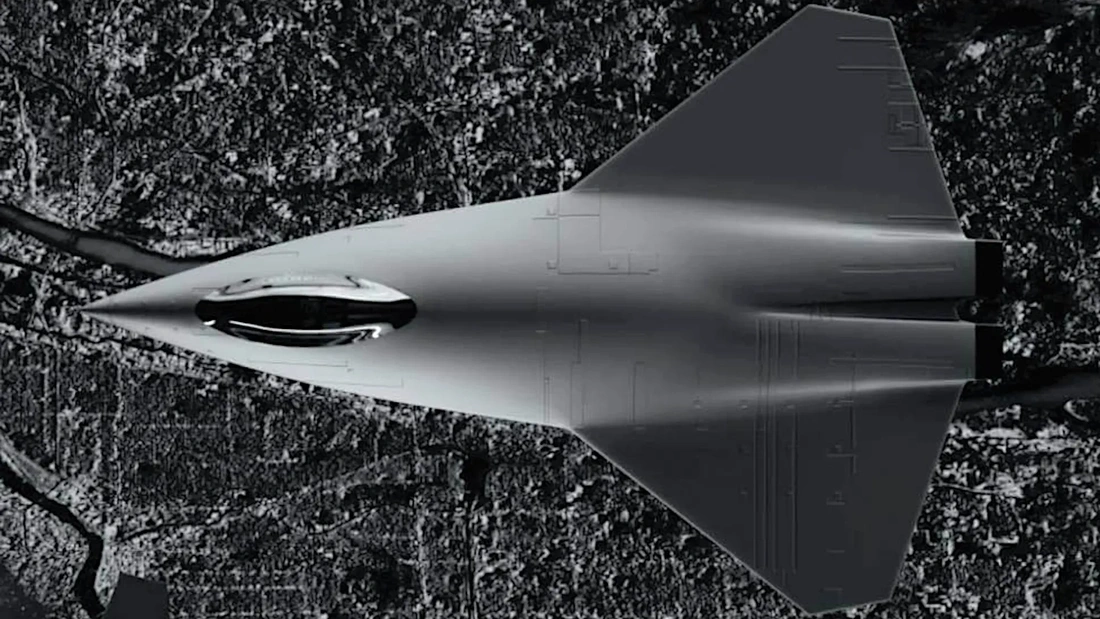
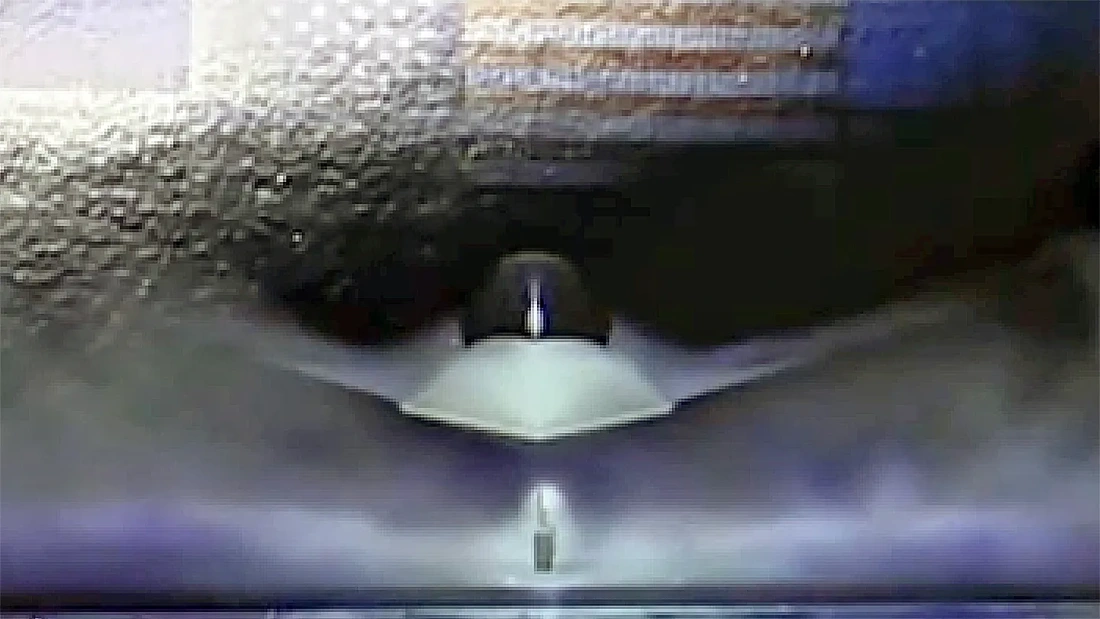
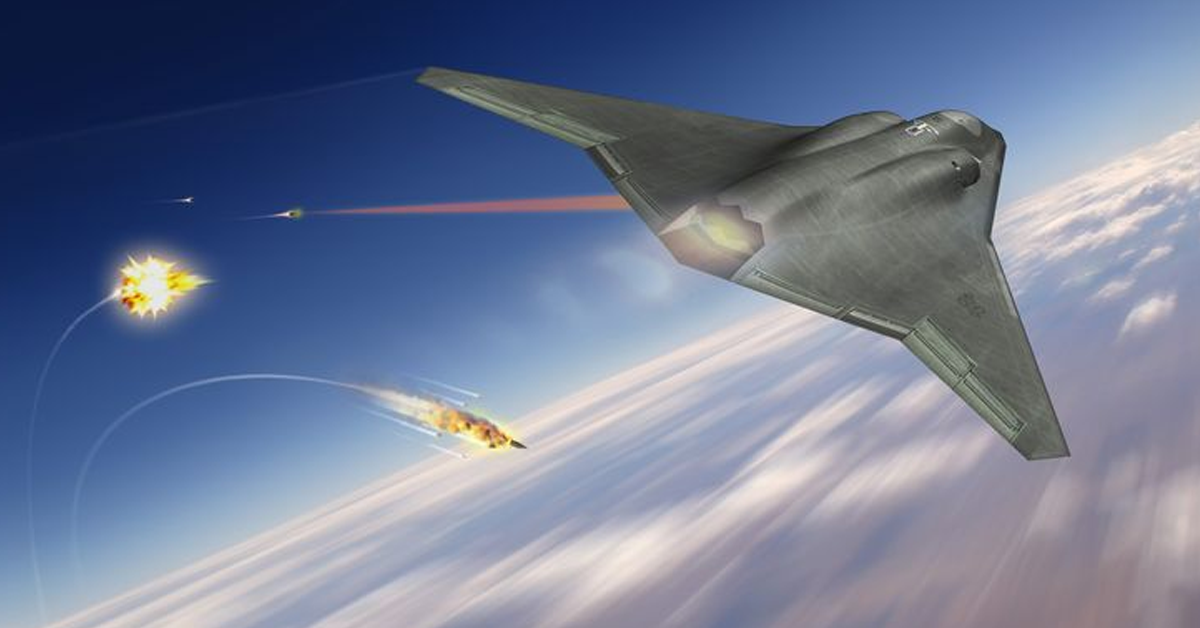
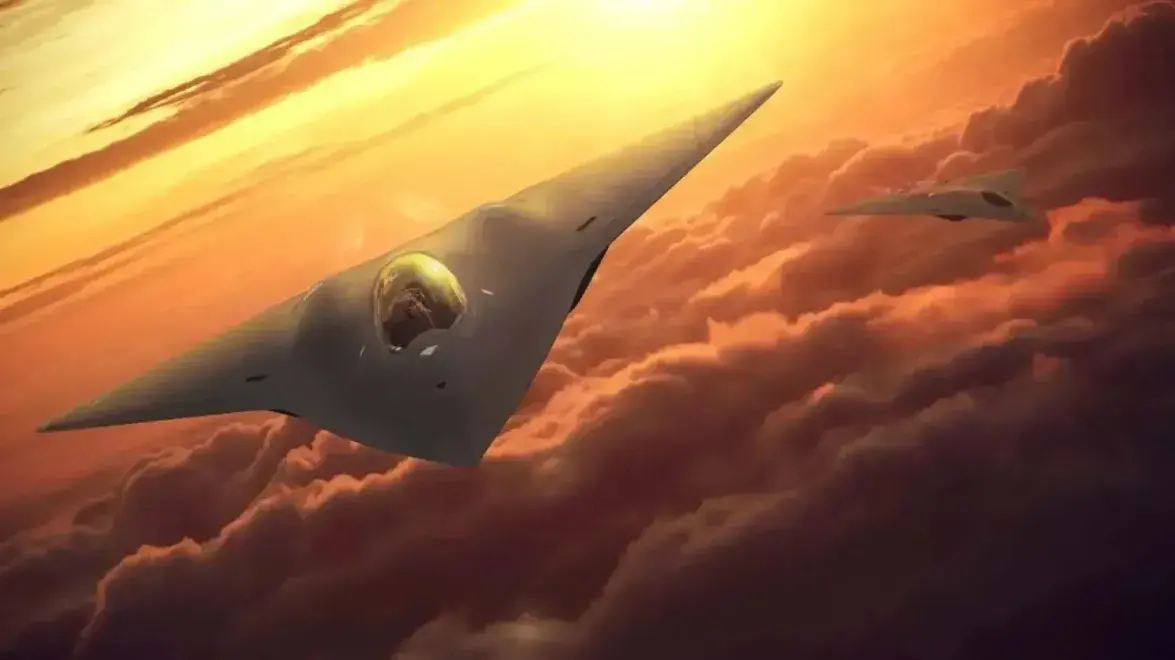
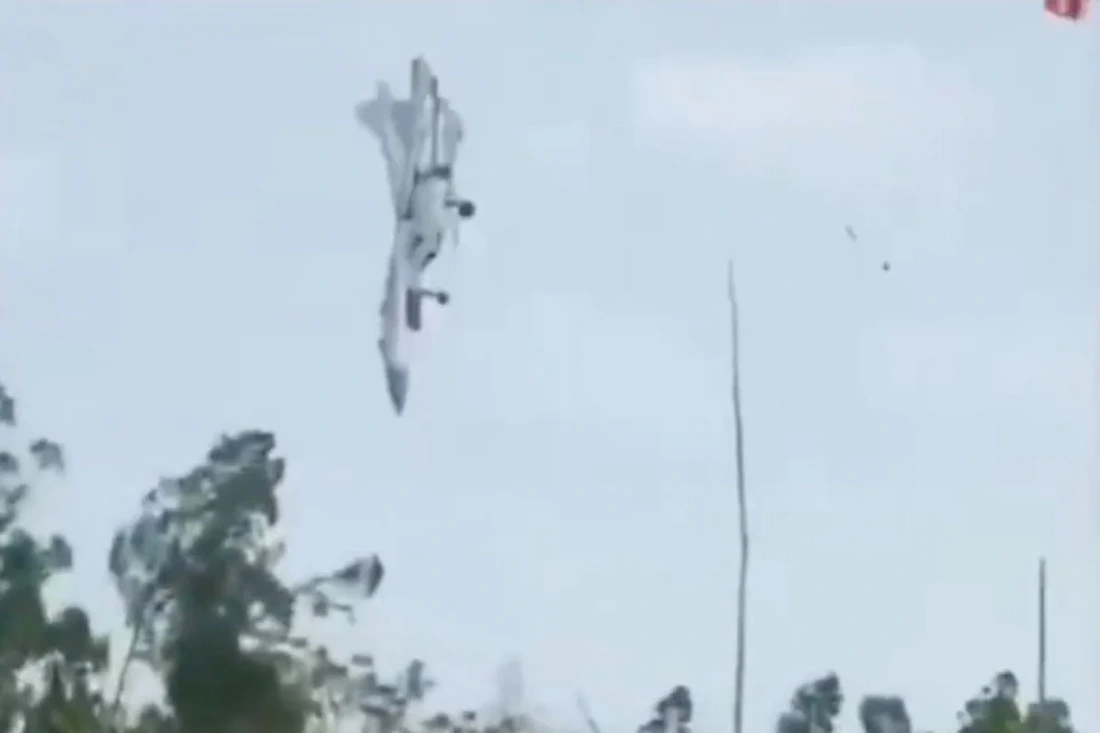
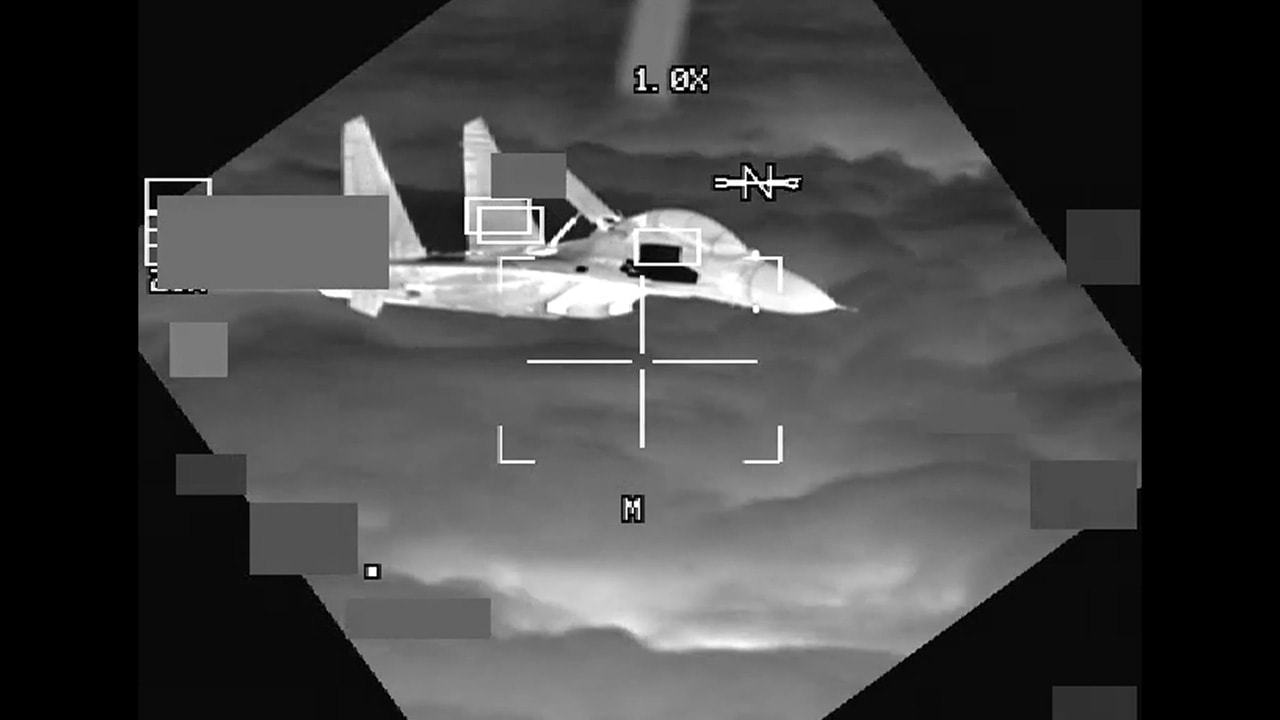
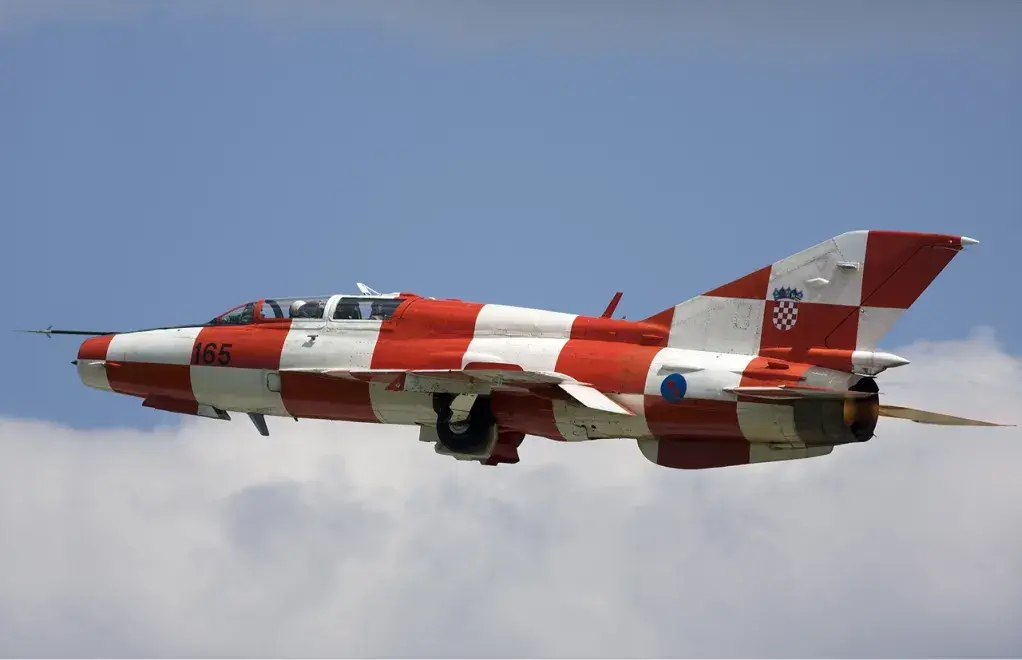
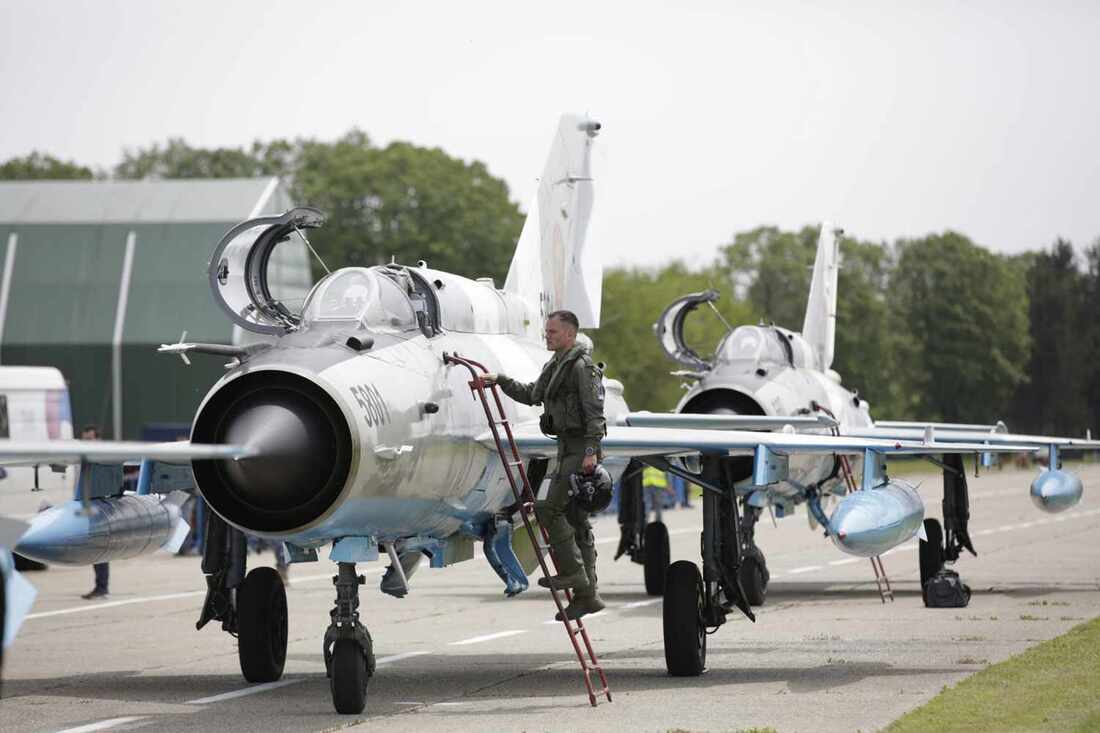
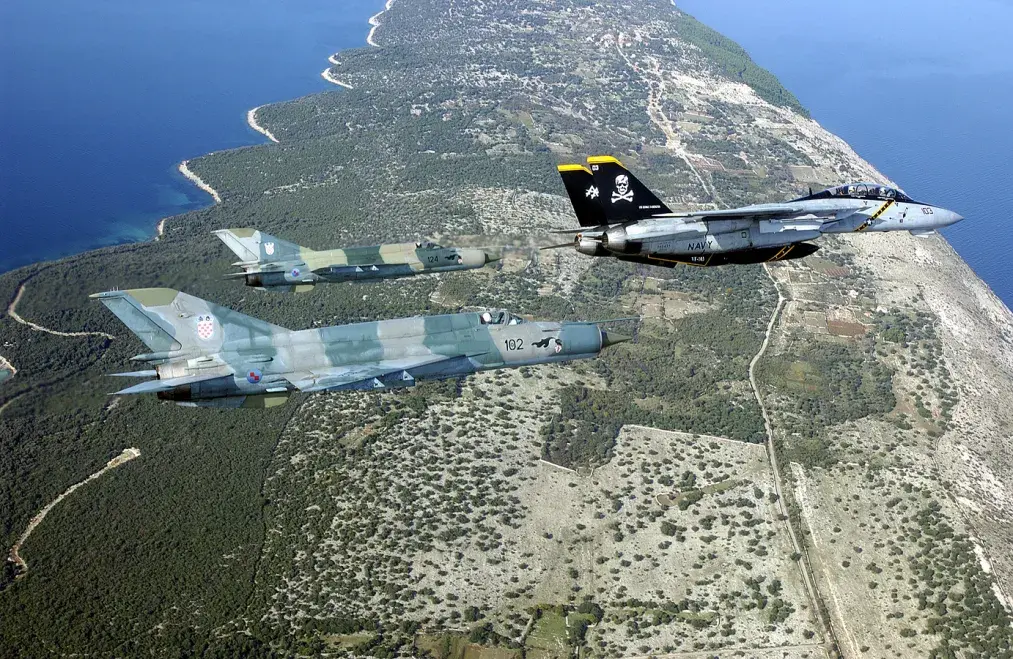
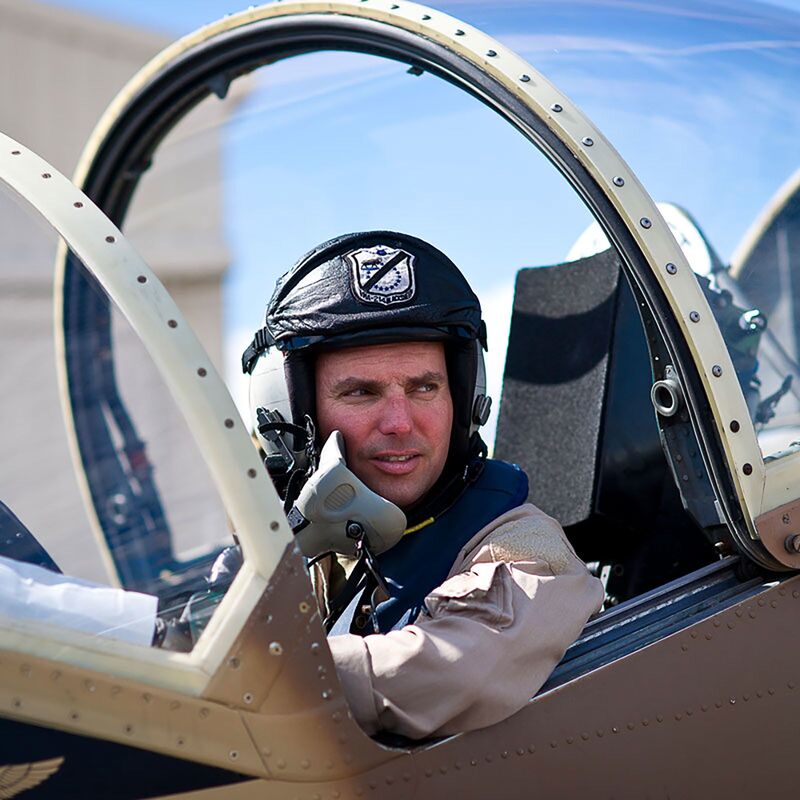


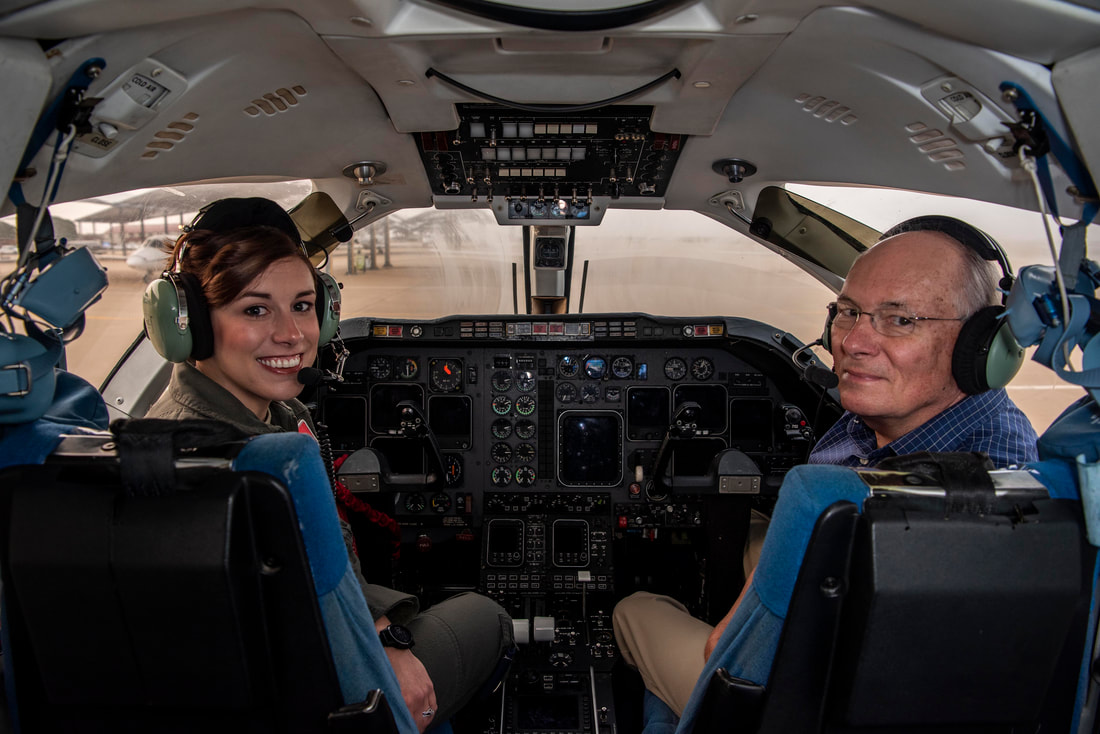
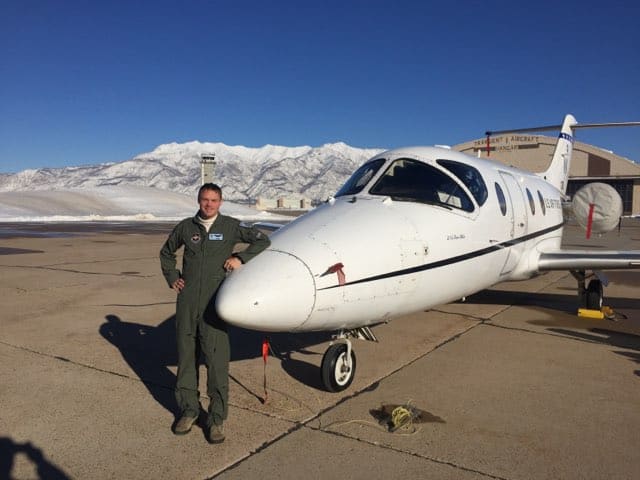

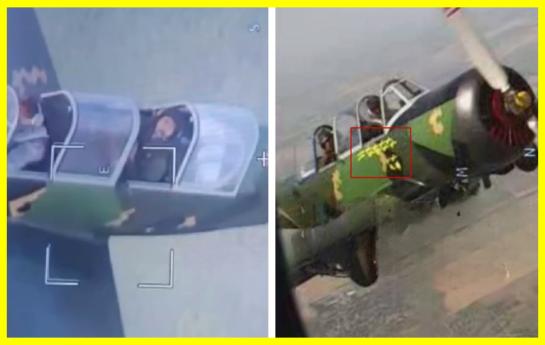
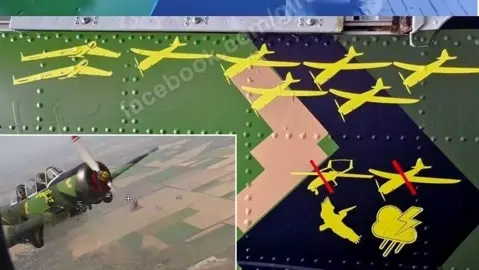
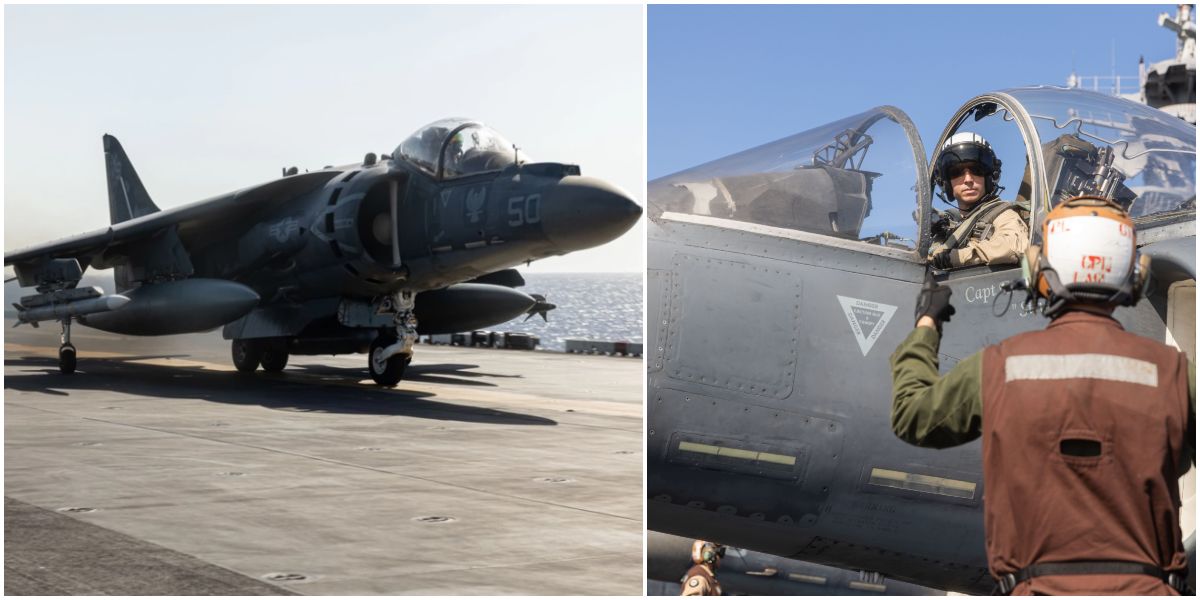
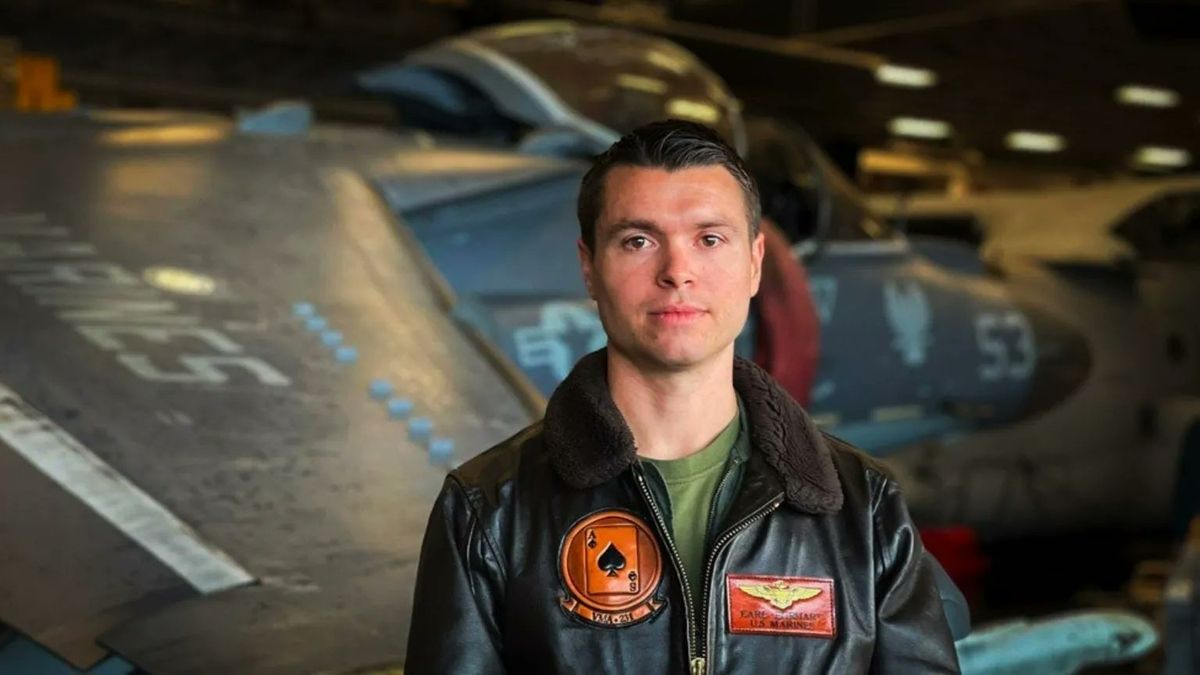
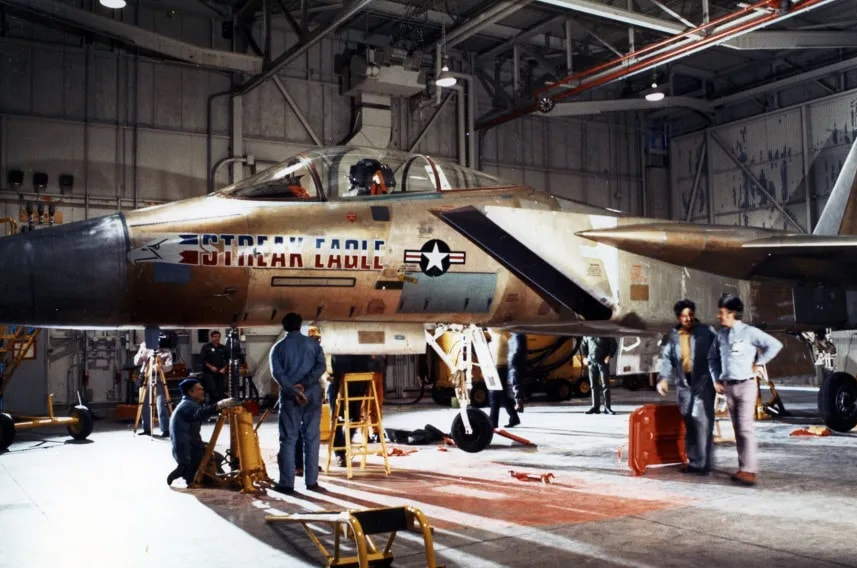

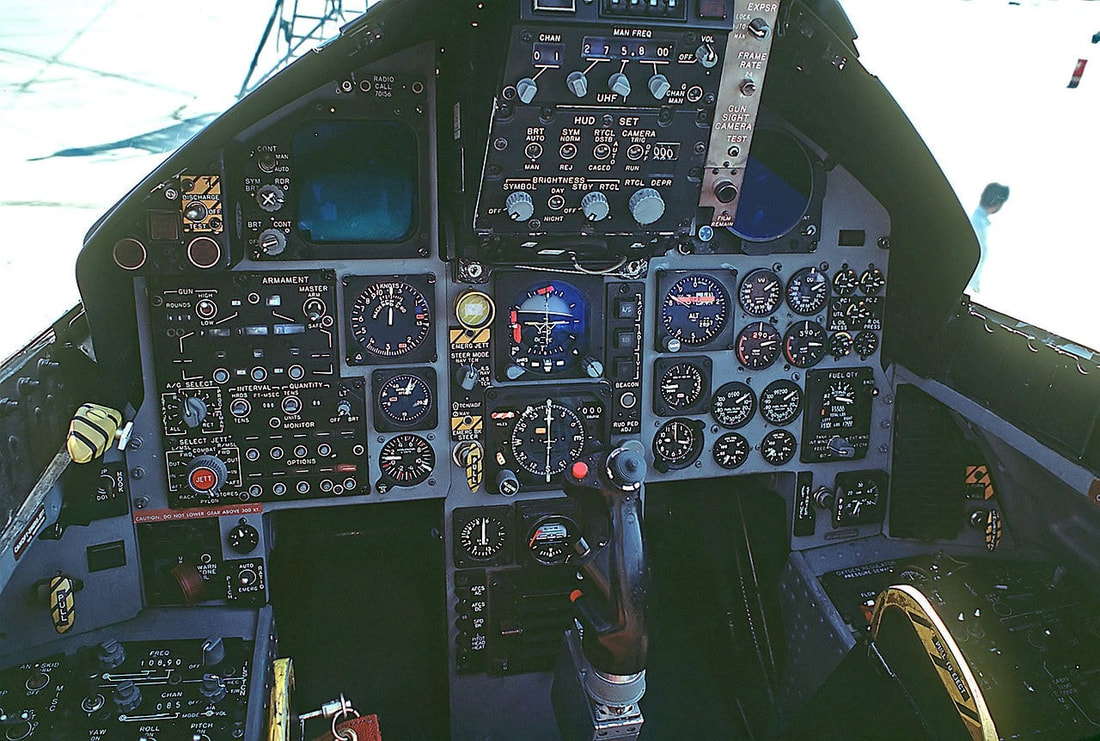
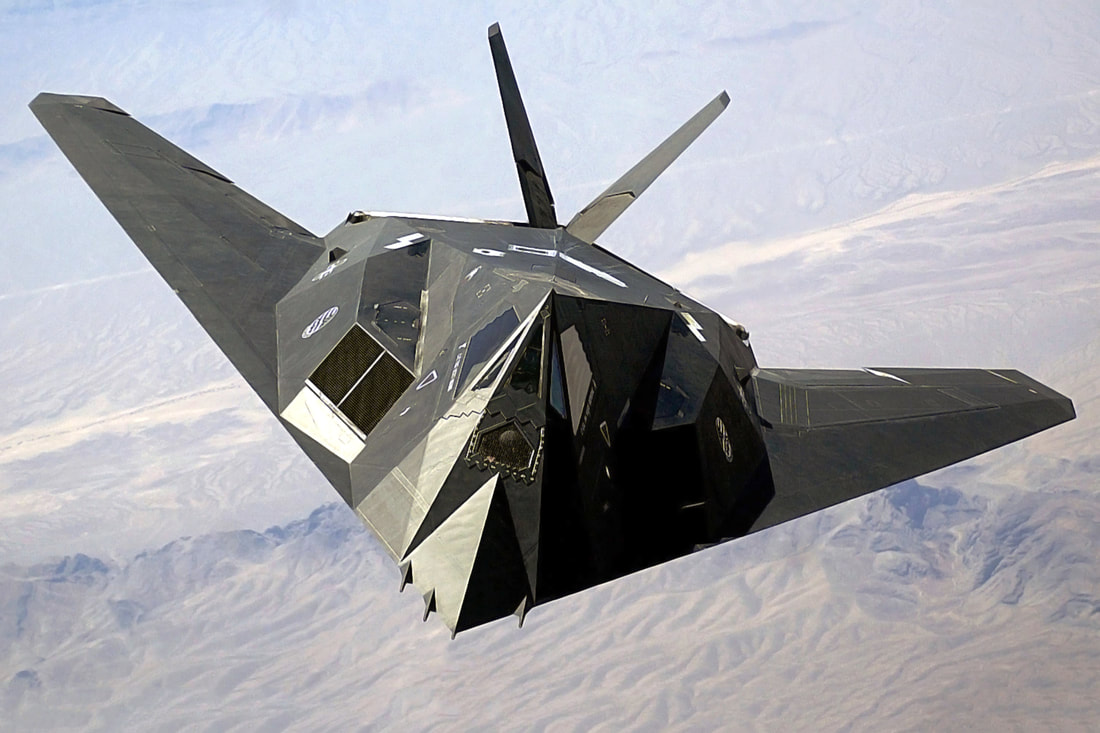
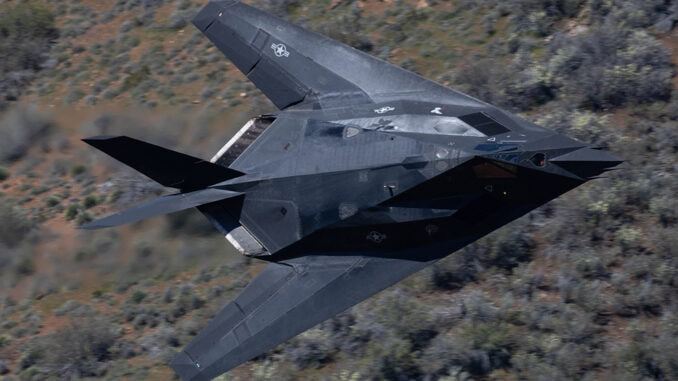
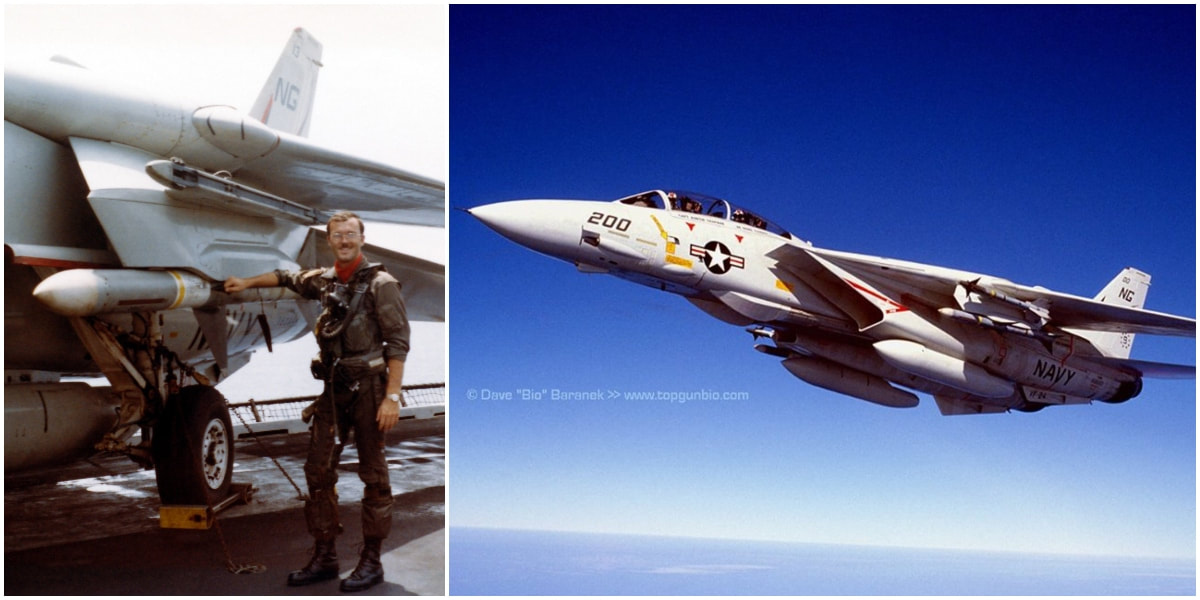
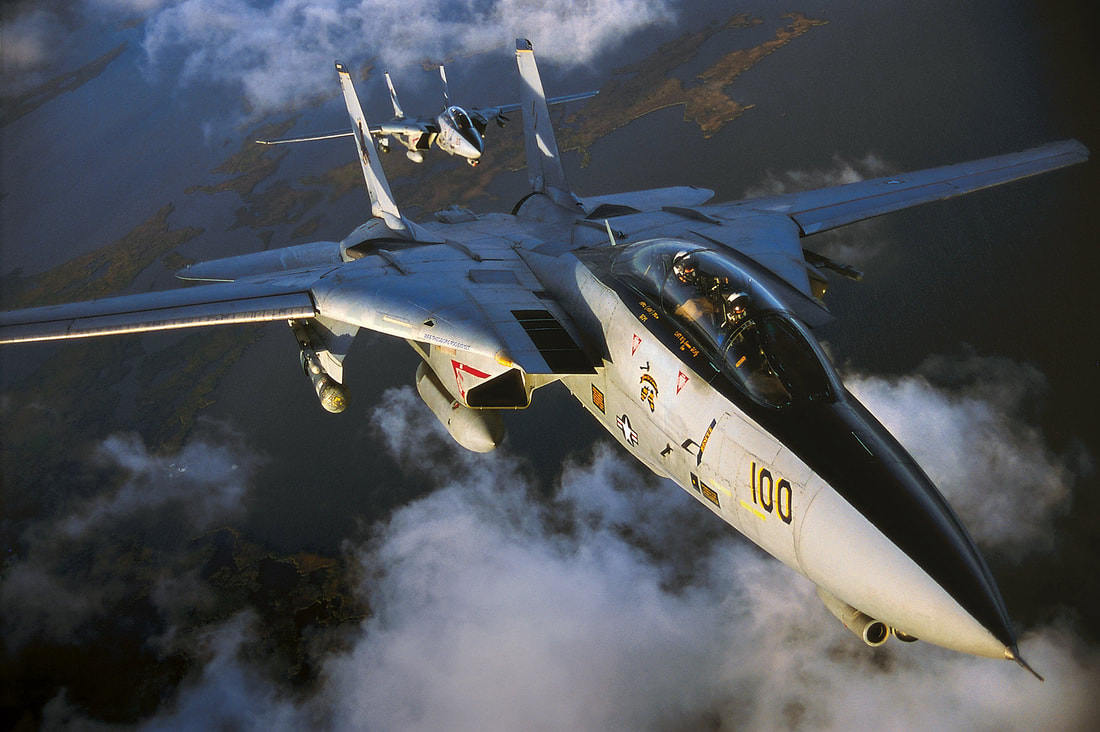
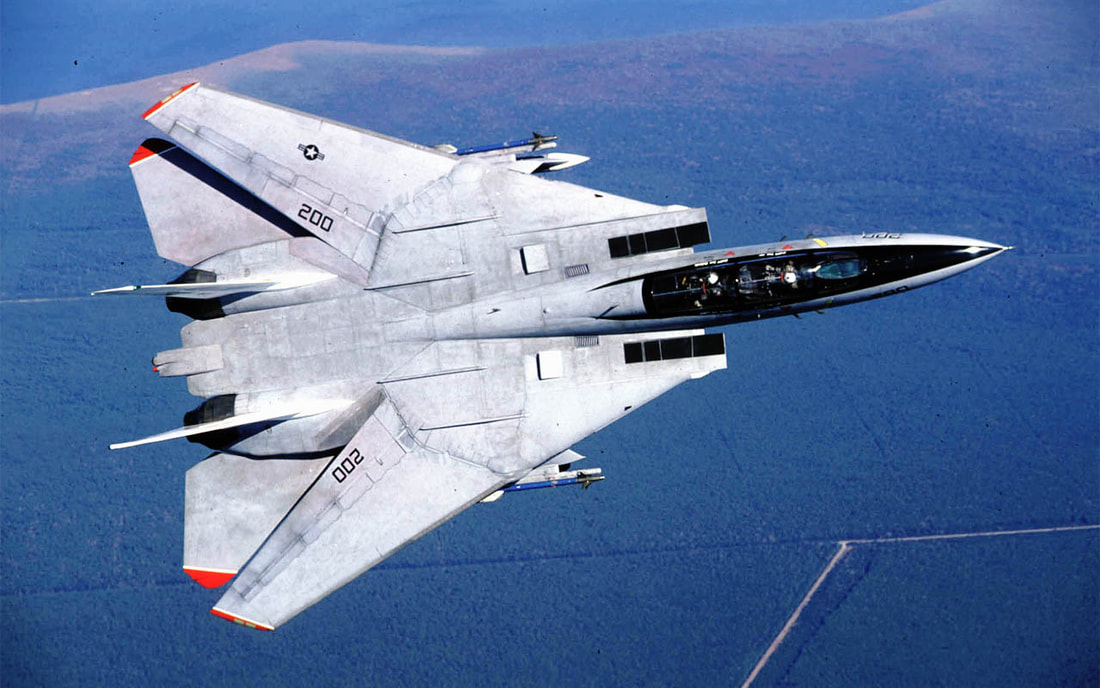
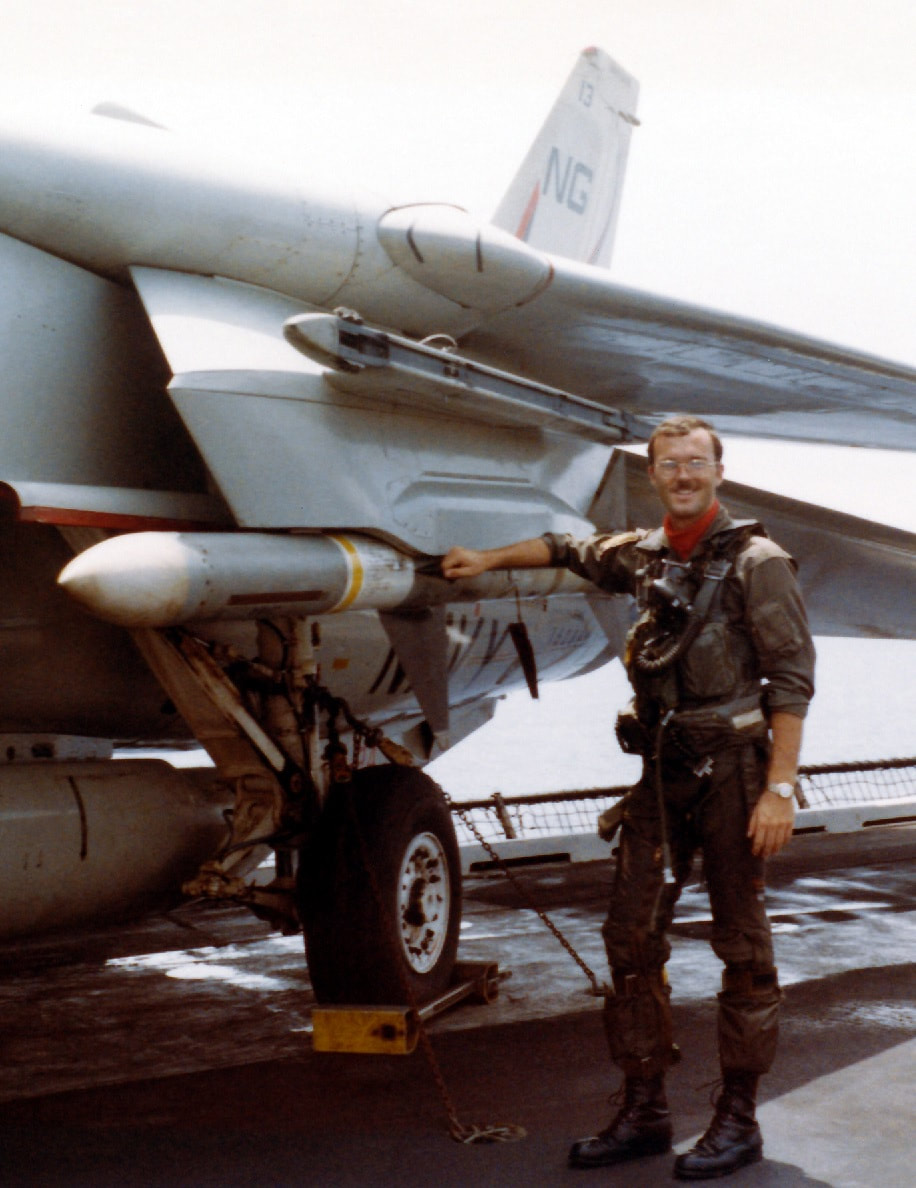

 RSS Feed
RSS Feed